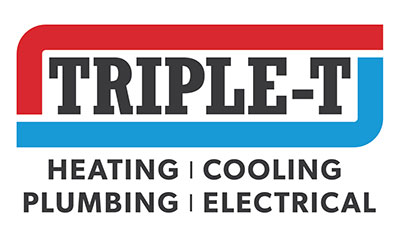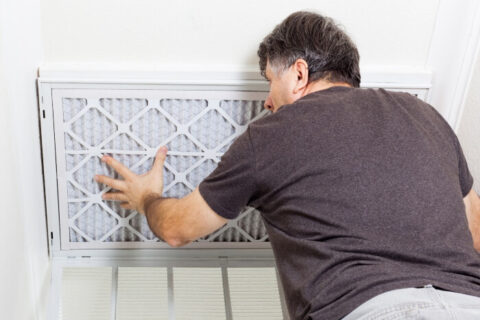What Refrigerants Do Air Conditioners Use?
All air conditioning and refrigeration equipment operate on the same principle—use refrigerant to absorb heat from an interior space and expel it to the exterior, leaving chilled air behind. This technology is easy to take for granted. However, recent regulation changes could have you wondering what refrigerant your air conditioner uses.
The History of Refrigerants
The earliest refrigerants were called chlorofluorocarbons (CFCs). Developed nearly a century ago, CFCs like R-12 (brand name Freon-12) were used for decades in everything from home air conditioners and car ACs to industrial chillers and nuclear factories. In the 1970s, scientists discovered that Freon-12 depletes the ozone. This eventually led to the discontinuation of CFCs in 1994.
As a replacement, manufacturers introduced hydrochlorofluorocarbons (HCFCs) like R-22 (brand name Freon). HCFCs are better than previous refrigerants, but they contain chlorine and are still harmful to the environment. In fact, HCFCs were only ever meant to be a transition refrigerant until more eco-friendly alternatives could be developed.
That day arrived in 2010 when the EPA banned the manufacture of new R-22 air conditioners, drastically driving down the production of Freon. As the phase-out continued, the manufacture of new R-22 refrigerant was eventually banned in 2020. Air conditioners installed before 2010 can still be recharged with reclaimed or recycled Freon, but costs will continue to climb as remaining supplies dwindle.
This phase-out plan was set back in 1990 as part of an international treaty called the Montreal Protocol on Substances that Deplete the Ozone Layer. The rule didn’t require homeowners to replace existing R-22 equipment, but it drove a faster transition to hydrofluorocarbons (HFCs) like R-410A (brand name Puron).
With no chlorine in the mix, HFCs are better for the environment. Air conditioners that run on Puron refrigerant are also more efficient, more reliable, and offer better indoor air quality than those running on Freon. Still, HFCs aren’t 100 percent safe, so the EPA has established a few rules regarding the handling the disposal of Puron:
- Refrigerant may not be intentionally vented. Low-loss fittings must be used to limit the amount of refrigerant released into the air while connecting, disconnecting, or purging an air conditioner.
- Technicians must recapture, recycle, and dispose of refrigerant as safely as possible.
- Air conditioners, refrigerators, freezers, and other appliances that use refrigerant must be disposed of properly.
- Refrigerant leaks must be repaired within 30 days of being discovered.
- Only licensed HVAC companies and technicians can purchase refrigerant.
- Violating these and other refrigerant regulations result in steep fines and punishments from the EPA.
The Future of Refrigerants
While Puron is an excellent non-ozone-depleting alternative to Freon, it still has a high Global Warming Potential (GWP). International leaders have proposed a phase-down of Puron and other high GWP refrigerants as part of the Kigali Amendment to the Montreal Protocol. Based on this, it is anticipated that many US states will limit the GWP for refrigerants used in HVAC systems to 750 as early as the year 2025.
Puron has a GWP of 2,088, well above this anticipated future limit, so it’s not a long-term solution. In fact, while Puron supplies will remain available to repair existing equipment, no new HVAC systems will contain this refrigerant as of 2023.
A few alternatives to HFC-based refrigerants like Puron have been proposed. The first are hydrofluoroolefins (HFOs), including R-454B (brand names Puron Advance, Opteon XL41, and Solstice 454B). This refrigerant does not deplete the ozone and has a much lower GWP of 465.
Hydrocarbons (HCs) are another option. Examples of these environmentally friendly refrigerants include R-290 (high-purity propane) and R-600A (isobutane). HCs are commonly halogen-free, have no ozone-depleting properties, and have negligible GWP. High-purity propane and isobutane are most commonly used in commercial refrigeration and air conditioning units, including retail refrigerators and freezer displays. The biggest problem with HCs is that they are highly flammable. This requires strict considerations for manufacturers regarding system design, installation, and operation.
How to Respond to Changing Refrigerants
If you have an older air conditioner running on Freon or Puron, have it inspected regularly for leaks. Gaseous refrigerants entering the atmosphere are a major cause of ozone depletion and global warming. If a leak is found, you have two options.
First, you can hire an HVAC company to fix the leak and recharge the system, knowing that Freon, Puron, and other refrigerants are not interchangeable. If you go this route, remember that Freon is no longer in production, and a Puron phase-down is in progress. This means it might be cost-prohibitive to perform the repair. Keeping old equipment in operation also means you will continue cooling your home with outdated, environmentally hazardous refrigerant.
Alternatively, you may decide that your aging air conditioner is costing you more money than it’s worth. In this case, you should replace your air conditioner with a model that runs on a cleaner HFO- or HC-based refrigerant. The savings on future repairs, not to mention more efficient performance, could justify the cost to upgrade your air conditioner. Plus, you’ll be doing your part to help the environment.
Contact Triple T for Air Conditioner Installation
If you’re tired of paying to fix refrigerant leaks and feeling ready to make an environmentally friendly change, this could be the year to upgrade your AC unit. Triple T Heating, Cooling & Plumbing can help you make the transition. Our air conditioner installation services are second to none, with great care and attention given to your family’s comfort needs, budget, and lifestyle. With our help, you’ll be on your way to lower energy bills and a more eco-friendly home.
For more information about refrigerants or to request an AC installation estimate, please call us at 801-798-7711 if you live in Utah County or 435-275-4011 if you’re a Washington County resident. You can also schedule HVAC services online.


